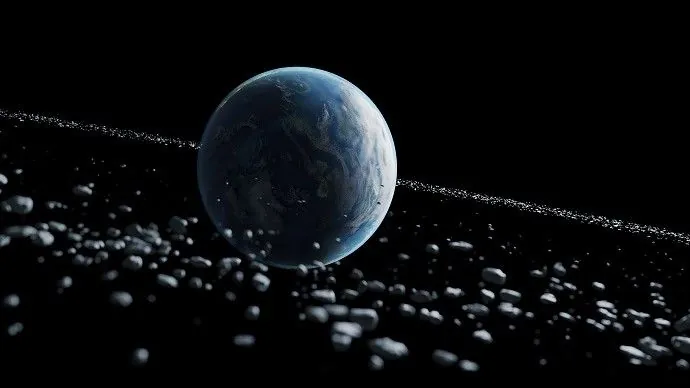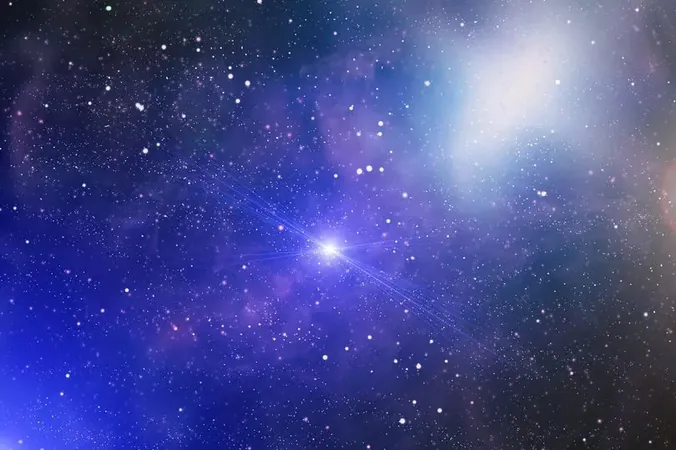
Did Earth Once Have a Spectacular Saturn-like Ring? New Research Uncovers Shocking Possibilities!
2024-09-17
Introduction
Recent research suggests that Earth might have once adorned itself with a majestic ring, similar to the iconic rings of Saturn, potentially leading to a flurry of chaotic meteorite impacts on its surface. The groundbreaking study offers a glimpse into Earth's ancient past and raises intriguing questions about its climatic history.
Findings of the Study
According to the study, published on September 16 in the journal Earth and Planetary Science Letters, this hypothesized ring may have formed approximately 466 million years ago from the remnants of a colossal asteroid. This asteroid was violently torn apart by Earth’s tidal forces after it crossed the Roche limit, creating a stunning ring that would have encircled the planet.
Impact of the Hypothetical Ring
The presence of such a ring would not only have cast a shadow over Earth’s equator but could also have influenced global climate conditions by blocking sunlight, leading to a significant cooling event. Meanwhile, the impact of debris showering down from the ring would have bombarded Earth's surface, causing a marked spike in meteorite impacts during that period. Lead researcher Andy Tomkins, a planetary science professor at Monash University in Australia, emphasizes this connection: “Over millions of years, material from this ring gradually fell to Earth, creating the spike in meteorite impacts observed in the geological record,” he stated.
The Ordovician Period
The findings delve into the Ordovician period, spanning from 485 to 443 million years ago—an era marked by one of the globe's coldest climatic phases in the last 500 million years. This period undoubtedly saw a surge in meteorite strikes, making researchers eager to understand the driving forces behind these phenomena.
Research Methodology
In their investigation, the scientists meticulously mapped 21 impact craters from the Ordovician epoch and noted a striking pattern: all these craters were located within 30 degrees of Earth's equator. Given that 70% of Earth's continental crust lies outside of this equatorial band, the likelihood that these impacts occurred by mere chance is extraordinarily low—akin to rolling a three-sided die 21 times and landing on the same number each time.
Proposed Explanation and Conclusion
The researchers propose that the unique arrangement of these craters, coupled with the cooling climate, may be explained by the hypothesis of an equatorial ring formed by the remnants of a shattered asteroid. While acknowledging the need for further evidence to solidify this theory, they suggest that such ring systems may have appeared multiple times in Earth’s history before being gradually dismantled by the planet’s gravity.
Implications of the Research
The implications of this research extend far beyond just understanding ancient meteorite impacts; they open new avenues to explore how extra-terrestrial events have historically shaped Earth's climate dynamics. “The idea that a ring system could have influenced global temperatures adds a new layer of complexity to our understanding of how extra-terrestrial events may have shaped Earth’s climate,” Tomkins concluded.
Future Research Directions
Could Earth’s ancient ring still hold secrets about our planet’s climatic evolution? As study continues, the mysteries of our planet's past may slowly begin to unravel, revealing the cosmic dance that has influenced the Earth itself!


 Brasil (PT)
Brasil (PT)
 Canada (EN)
Canada (EN)
 Chile (ES)
Chile (ES)
 España (ES)
España (ES)
 France (FR)
France (FR)
 Hong Kong (EN)
Hong Kong (EN)
 Italia (IT)
Italia (IT)
 日本 (JA)
日本 (JA)
 Magyarország (HU)
Magyarország (HU)
 Norge (NO)
Norge (NO)
 Polska (PL)
Polska (PL)
 Schweiz (DE)
Schweiz (DE)
 Singapore (EN)
Singapore (EN)
 Sverige (SV)
Sverige (SV)
 Suomi (FI)
Suomi (FI)
 Türkiye (TR)
Türkiye (TR)